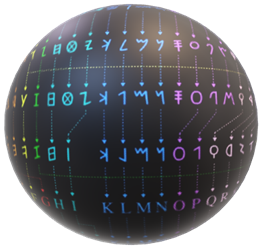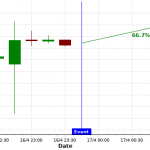By Rhonda Truter,
To date, the Autochartist suite of products is available in 28 languages, 10 of which have been added over the past 4 years. I will share how exactly we have accomplished this and what difficulties we have faced along the way. If you’re about to embark on a multi-language development project I hope you find this article useful.
In 2012 Autochartist started its journey in English and slowly started adding other popular languages such as Russian, Italian, Spanish, Indonesian and Chinese. Autochartist has become increasingly popular in various regions around the world. This has required us to connect with our client’s audiences in languages, that at the time we might not have offered. Through many discussions with our clients we have been able to identify which languages each of our client’s require for them to benefit from the Autochartist products available to them. This has allowed us to expand on existing products in new regions and launch new products in more languages globally.
How many languages are enough?
There are many factors that contribute to our decision-making when adding new languages. Some examples of these are: development costs, technical distribution limitations, translation costs, proofreading costs and most importantly, audience preferences in the region where our client’s market their brand. Our language selection is always based on the communication needs of our clients.
Development Costs – Time is money; therefore, this cost is dependent on the time spent on technical development. There are usually some code changes needed, mapping of locale codes, changes to property files, adding country code references and other fine details that take up development time when adding new languages.
Technical Distribution Limitations – It can be challenging to add to a new language to an implementation that was originally done in English. Especially when making additions to languages that have a unique alphabet and/or for languages that write from right to left. Issues we encounter, such as layout, encoding, formatting and external language limitations, from some of our third-party applications come to mind.
Translation Costs – This is language dependent; it is difficult to source good translators for some languages. Translation costs are high and could range from $0.08 to $0.15 per word. With some of the content being sent out for translation being up to hundreds upon thousands of words long.
Proofreading Costs – As with translations, it is more challenging to find a reputable proofreader for Persian than it would be for languages such as Spanish or German, for example. Proofreading could range from $0.06 to $0.13 per word and is also depicted by the complexity of our content. Every project that we have translated is also proofread.
Audience Preference (Market size) – Initially, our chosen languages were based on the more widely spoken languages. As time went on, languages have been added according to changes in market interest and our clients requests for additional languages. We do keep in mind that there are people in smaller regions interested in Autochartist but this is mostly dependent on our clients primary language requirements.
The Universal Language of Imagery
Our use of imagery to help convey information effectively has been instrumental to our success and the simplification of the translation process. The use of visual chart analysis has promoted this simplicity, by using simple, easy to read chart analysis within our entire range of products. If you can use an image to explain a concept, then opt for that instead of translating text – a picture really is worth a thousand words!

Unique Language content and why our Client’s LOVE it
Natural Language Generation (NLG) software process that transforms structured computer output into what seems to be naturally spoken language. We use natural language on behalf of our clients for social media integration. This is vital because our content is used on public sites / blogs / adverts and our customers do not want to be penalized by search engines for content aggregation and duplication. We have our own in-house Natural Language Generation process that makes it possible to provide our clients with unique analytical content. The purpose of this content is to save time, money and create online traffic for our clients.
The journey to understanding the needs and requirements to help make this possible through Autochartist has taught our team a great deal about the details in understanding human grammar. Natural spoken language allows for much more variety of explanations and phrases than programmed language, this has definitely made NLG at Autochartist more challenging.
An interesting hurdle we have overcome is the classification of nouns in various languages. French, Spanish and Italian, for example, all use a masculine gender, feminine gender and common gender to classify the way words are written. This is often affected by singular and plural phrases.
We have implemented and improved on our Natural Language Generation and I believe we will continue to learn about languages around the globe as we expand on the languages available. Since the process of producing Natural Language content is not about simply getting some words and phrases translated, Autochartist offers NLG in only 6 languages, but this number is expected to grow in the near future.

Finding the Best Translations Process for us
Autochartist calls for extensive translation and proofreading services. Over the years we have tried and tested many online translation companies but not until a year ago had we found one perfect for our needs and requirements to provide us with the quality we need.
Here are some tips to choosing a translation company:
- Only use native language speakers to translate your projects. Stay away from words that have negative connotations for the specific language.
- The translators should know that there are many differences in idiomatic expressions and slang which need to be front of mind when completing a translation project.
- Test them – Have translation projects professionally proofread by native speakers from a different company. The proofreader will need to check for spelling, readability, whether it was naturally written etc. Once you get these proofread results back, pass them back to the translator. Allow them to explain their reasoning and ask them to accept or decline the changes made by your proofreader.
- Do translation companies really use proof-readers? The truth is we won’t ever know the answer to this but, after testing your translators a few times you will begin to understand their style. It is important to note that there is often more than one way of saying something.
Through translation, many phrases and content pieces could be misinterpreted and “lost in translation” if not used carefully, because of this we have all of our translated projects proofread by a native speaker that are not affiliated with the translation company we use. This way ensures quality in what we provide to our clients.
I hope this article has provided you with some interesting insights of what it takes to manage 28 languages in a software project. If you’re expanding into other languages be sure to pay great attention to your internal processes!

